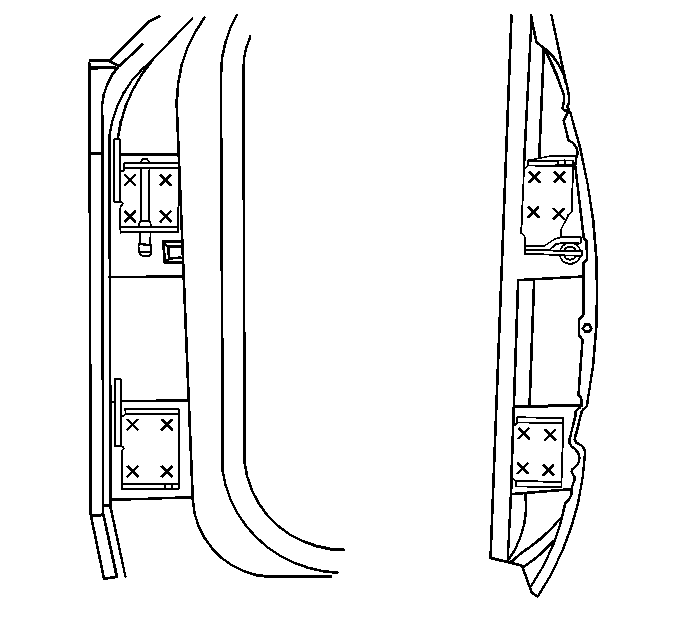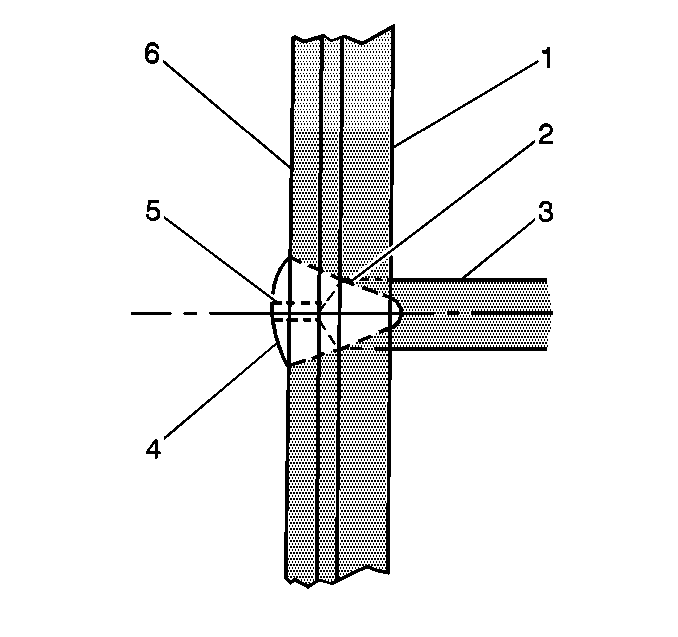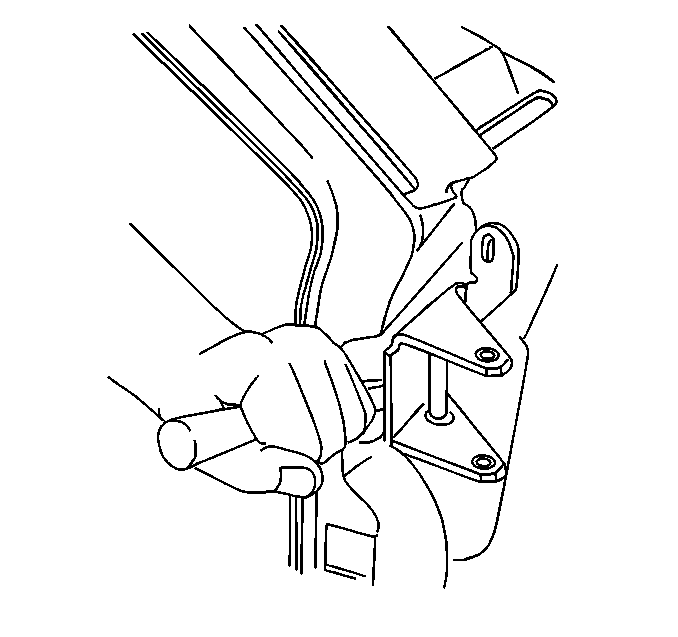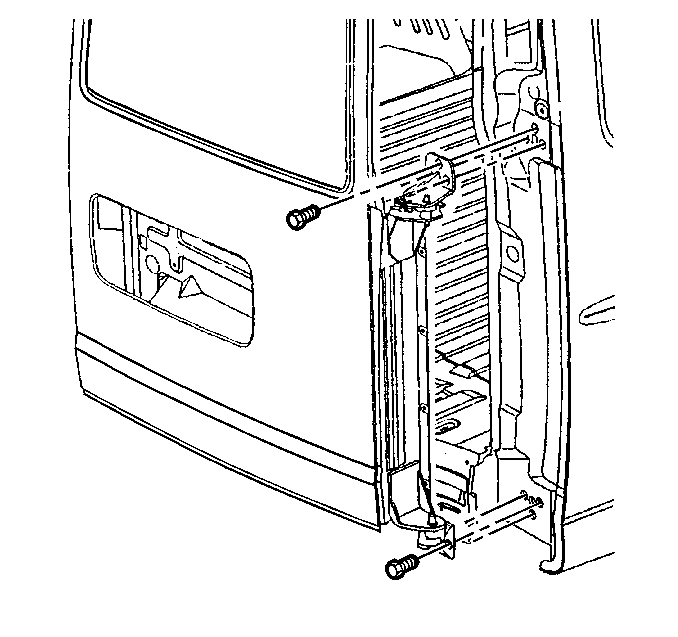For 1990-2009 cars only
Removal Procedure
- Remove the door from the vehicle. Refer to Rear Door Replacement - Left Side or Rear Door Replacement - Right Side .
- Remove the sealer that surrounds the hinge.
- Scribe the location of the existing hinges on the body pillar or the door.
- Mark the approximate centers of the mig welds on the hinge base.
- Drill a 3 mm (1/8 in) pilot hole (5) completely through the spot welds (4) at each center punch mark.
- Drill a 13 mm (1/2 in) hole through the hinge base (6) and the body pillar or the door using the smaller hole as a pilot.
- A small amount of weld may still retain the hinge base to the body pillar or the door. Drive a chisel between the hinge base and the body pillar or the door in order to separate the hinge from the body pillar or the door.
- Remove the hinges from the door or the body pillar.




Installation Procedure
- Deburr the holes on the inside of the hinge pillar or the door in order to insure the proper seating of the hinge and the backing plate. Inspect the body pillar and the door in order to ensure that the hinge seating zone on the body pillar or the door is flat.
- Paint the inner and the outer surfaces of the hinge pillar or the door at the hinge mounting zone.
- Coat the mating surface of the hinge with a medium bodied sealer.
- Position the bolt-on service replacement hinges within the scribe marks that were made on the body pillar or the door at the time of removal.
- Install the hinge to the body pillar or the door using the bolts and the tapping plate that is supplied with the service replacement kit.
- Tighten the bolts to the recommended preliminary torque.
- Install the door to the body. Align the door as required. Do not close the door completely until you make a visual check in order to determine if the lock will correctly engage the striker.
- Apply the sealer around the hinges.
- Paint the hinge assembly.
- Install the door to the vehicle. Refer to Rear Door Replacement - Left Side or Rear Door Replacement - Right Side .


Notice: Refer to Fastener Notice in the Preface section.
Tighten
Tighten the bolts to 5 N·m (44 lb in).
Tighten
Tighten the bolts to 25 N·m (18 lb ft).

